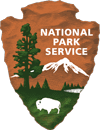National Heritage Areas (NHAs) are designated by Congress as places where natural, cultural, and historic resources combine to form a cohesive, nationally important landscape. Through their resources, NHAs tell nationally important stories that celebrate our nation's diverse heritage. NHAs are lived-in landscapes. Consequently, NHA entities collaborate with communities to determine how to make heritage relevant to local interests and needs.
NHAs are a grassroots, community-driven approach to heritage conservation and economic development. Through public-private partnerships, NHA entities support historic preservation, natural resource conservation, recreation, heritage tourism, and educational projects. Leveraging funds and long-term support for projects, NHA partnerships foster pride of place and an enduring stewardship ethic.
To learn more about other National Heritage Areas please visit the Alliance of National Heritage Areas.
The National Heritage Area Program
NHAs further the mission of the National Park Service (NPS) by fostering community stewardship of our nation's heritage. The NHA program, which currently includes 55 heritage areas, is administered by NPS coordinators in Washington DC and seven regional offices - Anchorage, Seattle, Oakland, Denver, Omaha, Philadelphia and Atlanta - as well as park unit staff.
NHAs are not national park units. Rather, NPS partners with, provides technical assistance, and distributes matching federal funds from Congress to NHA entities. NPS does not assume ownership of land inside heritage areas or impose land use controls.


